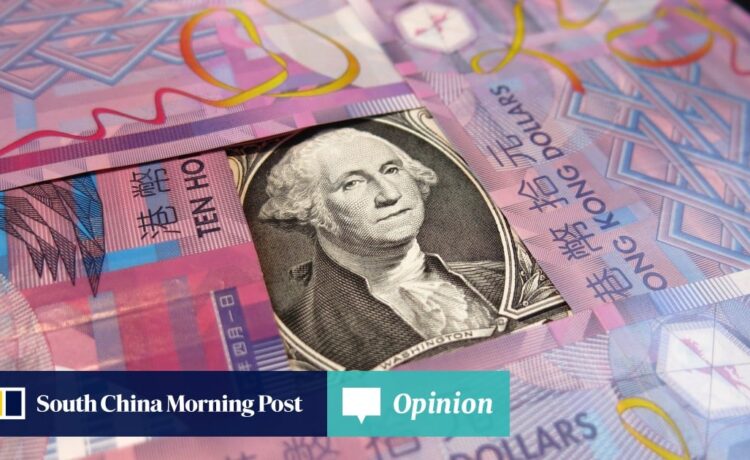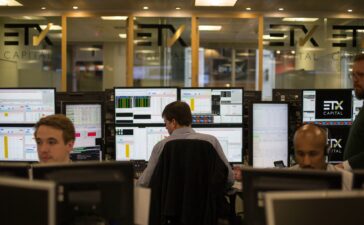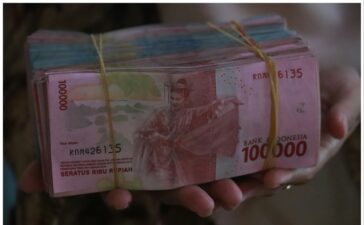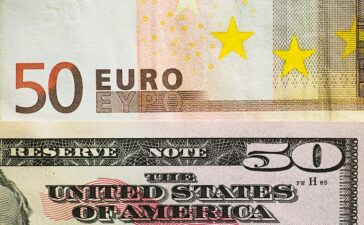Growth in the coming year could continue to be sluggish, not least because the mainland is grappling with the end of the debt-fuelled bubble in real estate, deflation, and a persistent decline in asset values for over two years.
While the Hong Kong economy clearly needs stimulus, the city authorities’ ability to deliver such stimulus is constrained by at least two long-standing macroeconomic policy failures.

Twin failures
On the financial front, Hong Kong’s deficit increased to HK$164 billion (US$21 billion) in the first eight months of the financial year, much worse than the government’s full-year estimate of HK$100 billion. Increases in public spending, much needed to make up for the shortfalls in private consumption, must be financed eventually – by tax increases, government borrowing, a drawdown of government savings, or a combination of such measures.
Here, the Hong Kong government’s chronic inability to introduce a goods and services tax (GST) to diversify its revenue base and reduce its reliance on land sales is an enduring source of financial vulnerability. Back in 2006, I asked a senior administrative officer why the government did not introduce a GST when it was clear to most economists this was needed. The Hong Kong economy was also growing strongly then, so public opposition to the GST could more easily be ameliorated with GST reliefs and cash transfers. She replied that the Hong Kong public was implacably opposed to the GST.
As Hong Kong’s economy sputters, it’s time to face the new reality
As Hong Kong’s economy sputters, it’s time to face the new reality
There is never a good time to introduce or increase taxes, especially a GST, which affects low-income residents disproportionately. But governments around the world have figured out best practices about the timing of such tax increases and how low-income groups can be compensated. Hong Kong would hardly be the first place in the world to introduce a GST; a willingness to learn from other jurisdictions would have served the city better than assuming that its people are exceptionally implacable.
Perhaps the most important lesson Hong Kong should have paid heed to is that the best time to introduce a GST is when the government does not yet need the additional revenue. By the time the government finds itself in a financial crisis, it is virtually impossible to introduce it. This is because a financial crisis usually coincides with a wider economic slowdown – as Hong Kong is now experiencing – that hurts household spending and crimps the government’s ability to finance GST reliefs for the population.
The lack of financial headroom to provide more stimulus for the economy might be understandable if the authorities could use another tool of macroeconomic stabilisation: monetary policy. But here, Hong Kong is even more constrained.
Until there is a better option, Hong Kong’s US dollar peg is here to stay
Until there is a better option, Hong Kong’s US dollar peg is here to stay
Over the year to May 2023, the HKMA conducted 49 market interventions, spending a total of HK$293.6 billion, a record for any 12-month span. Thankfully, inflation in the US seems to have peaked and most analysts expect the Fed to start reducing US interest rates by the middle of 2024. This would relieve the pressure on the Hong Kong dollar and provide the city’s economy with some respite from the excessively tight monetary conditions of the last two years.
Putting aside whether interventions to support an exchange rate that is ill-suited to Hong Kong’s economic situation are a good way of using its foreign reserves, the question that the city should be asking is whether its monetary policy setting – pegging to the US dollar – is correct and serves Hong Kong’s economic interests in the long run.

The Hong Kong economy is far less synchronised with that of the US today than it was decades ago. What was experienced in the last two years – when the US needed higher interest rates and a stronger US dollar to cool inflation, while the city needed lower interest rates and a weaker Hong Kong dollar to support growth, or vice versa – will become increasingly common. Pegging to the US dollar will thus become increasingly inappropriate for Hong Kong.
This is not to suggest that the Hong Kong dollar should be pegged to the renminbi; rather, Hong Kong should always have had a more flexible exchange rate system. For instance, it could have linked the Hong Kong dollar against an undisclosed basket of currencies – such as the exchange regime for China or Singapore – and allowed it to fluctuate within a wider band. Such a managed float system would allow Hong Kong to gain some control of monetary policy.
Obviously, at the time when the Hong Kong dollar was under pressure, changes to the exchange rate regime could not be contemplated. Any change to the exchange rate system can be destabilising. Executed poorly, a sudden change could lead to capital flight and an erosion of confidence in the currency. But this also means that the best time to bring about the necessary changes in Hong Kong’s exchange rate system is when it faces appreciation – rather than depreciation – pressure.
Lessons for policymakers
There are at least three lessons that policymakers should draw from the twin failures highlighted above.
The first is that the best time to make changes to the policy regime is when such changes are not yet urgently needed. By the time the state faces a crisis that necessitates urgent changes, it is unlikely to have any good options left.
Hong Kong is close to this point. It needs a large financial stimulus, but its options are limited as its financial position is already stretched while introducing a GST to shore up public finances is contractionary. Similarly, it would help the economy if the Hong Kong dollar was not so strong. But abandoning the peg now would only invite more speculative attacks on the Hong Kong dollar.
When times are good, a state has more resources to compensate those who lose out from changes to the policy regime. As a former boss of mine used to say: “The failure to change in good times is usually the result of failures to change in good times.”
Hong Kong finance chief rules out capital gains tax for ‘foreseeable future’
Hong Kong finance chief rules out capital gains tax for ‘foreseeable future’
Second, policymakers must distinguish between cyclical or short-term problems and structural or chronic ones. Hong Kong’s problems today are not just cyclical, they are also structural ones.
For instance, in defending the Hong Kong dollar, the city has ample reserves to weather speculative attacks in the short term; the current cycle of interest rate hikes in the US has also come to an end. But unlike market participants who focus on the short term, policymakers have the added responsibility of anticipating – even if they cannot fully predict – long-term trends. And in the long term, it is quite clear that Hong Kong needs a more flexible exchange rate regime.
Third, structural problems cannot be addressed by short-term fixes; instead, they require structural solutions. Hong Kong’s financial woes stem from an overreliance on land sales. Reducing public expenditures – say, poorly targeted subsidies for accidents and emergencies – is not an appropriate fix for the structural problem of an inadequately diversified revenue system.
Donald Low is a senior lecturer and professor of practice, and Director of Leadership and Public Policy Executive Education, at the Hong Kong University of Science and Technology.


















